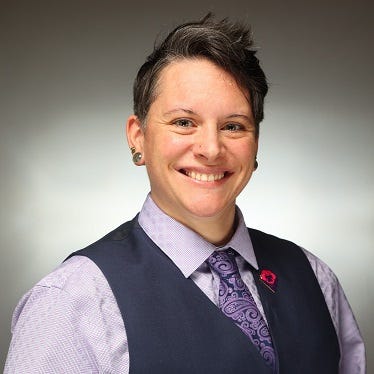5 Questions Friday: Sustainable solutions
This month's column, with insights from our editorial board, complements the digital magazine's focus on sustainable food and beverage solutions.

At a Glance
- New Hope Network's Amanda Hartt details new research conducted by the group on what consumers really want.
- Olam beverage scientist Candace Smith-Lee discusses edible packaging, packaging design for extended shelf life, more.
- The experts write about how upcycled ingredients are an example for sustainable processing in the value chain.
Earlier this year, we established the Food & Beverage Insider Editorial Council. It’s comprised of industry professionals, including food scientists, a market research expert and procurement manager. That’s certainly a well-rounded collective of folks!
We meet quarterly to discuss industry issues and how Food & Beverage Insider may better cover them. These conversations are so insightful that we decided to bring them directly to the audience.
On the last Friday of the month, get ready for “5 Questions Friday,” when we propose a topic, ask them some questions and they answer them. It’s just that simple.
September’s column complements this month’s digital magazine, which focuses on sustainability. This time around, Amanda Hartt, senior manager, NEXT Data & Insights, New Hope Network, and Candace Smith-Lee, senior food scientist, beverage, olam food ingredients, offer their expert advice. Additionally, Harper F. Hall, project leader, taste applications, Ingredion, serves as guest editor for his company's knowledgeable sustainability team.
Food & Beverage Insider: What are some areas of sustainability you think should be discussed more in the industry?
Amanda Hartt: Sustainability is such a broad term, so for starters, businesses, formulators, suppliers need to define what they mean by it. In research conducted by New Hope Network this past year, in a report published January 2023, we demonstrate that generic terms of sustainability focused on aspirational goals aren’t enough for CPG brands to win in today’s marketplace. Consumers show they are curious and spend more time following up and researching the details behind claims, certifications and a brand’s sustainability goals. Brands should be prepared to back up their claims and eco-social goals and share the stories behind their sustainability journey. In fact, it is just that, a dynamic, evolving journey to help consumers see the process behind the goals. Not only does it mean that greenwashing has met its match, but even well-intentioned brands without a plan or process are at risk for not following through on their commitments and losing trust with their consumers. Formulators, processors and suppliers should ensure they are informed and can accurately report on their sustainability goals to support brands on their sustainability journey.
Getting back to the primary question, within the broad sustainability space, the social, when it comes to eco-social concerns is overshadowed by environmental topics. People are the backbone of a thriving food system, including producers, farm workers, migrant laborers and factory workers in processing and manufacturing. At New Hope Network, we are noticing more brands and renegade entrepreneurs focus on social and equity issues fraught in a system tangled up with capitalism. In the cacao, dried fruits and nuts industries, we are seeing more brands look to producer community needs first, then build out a solution to improve agency among these communities where status quo supply relationships foster an extractive relationship perpetuating a cycle of poverty in developing world communities around the world. Some solutions we are seeing are manufacturing close to sourcing origin, so the producer communities reap more of the value-added benefits.
I mention these examples that we are seeing among emerging food and beverage brands and even among some pioneering brands to stimulate ideation among suppliers, processors, manufacturers to think more critically about social needs within their sourcing, but also look to solutions to empower factory workers.
Candace Smith-Lee: Personally, I would love to see edible packaging discussed more in the industry. Specifically, within the beverage space, the reduction in plastic straws has been a step in the right direction, but I love the idea of edible straws.
Additionally, ready-to-drink (RTD) options are on the rise due to their convenience, but the extra packaging and shipping of “water” in these types of beverages isn’t very sustainable. Products that are “just add water” sachets/multiuse packaging are just as convenient and can help lower shipping costs and potentially reduce carbon emissions, thus helping both the environment and consumers’ pockets.
What are the most sustainable ways to process and preserve food?
Smith-Lee: Packaging design is a key factor for food safety and shelf life. It’s important to balance the right barrier properties while being sustainable—something ofi’s Club Coffee team had to consider with their sustainable packaging options. Upcycling ingredients is also a great example for sustainable processing in the value chain and reduce/preserve food waste.
Ingredion sustainability team: Ingredient manufacturers need to be mindful of the emissions and water footprint of their operations. They need to know their footprint to establish ways to improve. Electrification continues to be a strong driver for sustainable food production. Replacing fossil fuel sources with equipment that runs on electricity introduces an opportunity to green up the product by purchasing renewable energy. Electric heat pumps have become much more popular in the past few years and will continue to be an important piece of evaporation processes.
How can we reduce the environmental impact of food packaging?
Hartt: There are quite a few strategies I’m seeing in the marketplace. Here are a few examples:
In beverages, we are seeing quite a bit of innovation and technology to remove water, produce concentrates and thus avoid shipping tons of water all over the world, while saving on packaging.
Many brands are focusing on plastic and vulnerable communities by deploying initiatives to partner with organizations to clean up plastic from coastal communities to prevent it from polluting oceans and waterways. Brands are offsetting their plastic use with these partnerships to become certified plastic neutral or plastic negative. Simultaneously, brands are making a commitment to use post-consumer recycled plastic to reduce using virgin plastic.
Lots of innovation to produce cost-effective compostable packaging across various food categories. The issue here is that access to commercial composting facilities is limited. In other words, municipal infrastructure is lagging behind the innovation. In many cases, the intended outcome of compostable materials is to be composted, but the reality is that much goes to landfills due to limited access to compostable facilities, so the environmental benefit isn’t as great as the initial intention. The industry needs more players and momentum pushing and goading infrastructure change to accommodate compostable packaging and ultimately the creation of supply chains that are circular as opposed to linear.
Clear and specific recycling instructions on packaging, particularly on various types of plastic resins, can go a long way. A label that even says “do not recycle” can help reduce the number of palettes or containers deemed unsuitable for recycling—due to the presence of unrecyclable material—and are instead diverted to landfills. Indicate whether the lid, the spray cap, the label, etc. should be recycled separately. There is a big push from policy wonks to modify the regulations of recyclability claims and logos to be more exact. It turns out that many types of plastics that are labeled recyclable on them are not in fact recycled. While the city collection bins indicate these plastics are accepted with grand illusions of recyclability, there is no end market to recycle them… yet. Instead, these labeled recycled plastics are collected by the materials recovery facility, resorted, and sent to the landfill. There is a huge gap in the infrastructure. For example, PET plastic resin number 1, typically used in RTD beverage and water bottles, is widely used and has a recycling end market, meaning the likelihood of it getting recycled is much greater than say polypropylene number 5. Polypropylene is a common plastic resin used in yogurt containers with less than 5% of these plastics being recycled.
Smith-Lee: Continued innovation can help the industry reduce the environmental impact of food packaging. For example, Club Coffee, a part of ofi, created AromaPak featuring Boardio technology. AromaPak uses recyclable paper-based packaging, replacing the multilayer bags and cans (that typically contain plastic or metal) traditionally used to package coffee beans and grounds. In addition to the paper-based packaging solution, Club Coffee also developed PurPod, which is the world’s first BPI Certified Compostable single serve pod with a unique upcycled coffee chaff ring.
Ingredion: Environmental impact of food packaging can be addressed in a couple of ways. First, companies can look into bio-plastics and compostable packing to replace petroleum-based products. Second, manufacturers can look into their shipping and distribution for efficiencies. Could products be shipped in bulk rather than in smaller lots? Is there a way to reduce packaging without compromising on quality or safety? Do not rely on how things have always been done for continually look for improvements.
What are the most sustainable ways to source and transport food ingredients?
Smith-Lee: Working with suppliers that can provide sustainability impact programs on their own estates or at origin for smallholder farmers across their supply chain can help food and beverage manufacturers source more sustainably. Collaborative partnerships across the public and private sectors, between suppliers, manufacturers, NGOs and local governments, can help address the challenges facing global food systems.
Ingredion: Efficient transportation mechanisms such as rail are much less CO2 emitting than traditional truck shipments. If there is a rail infrastructure for which to transport products, emissions can be cut by almost 85%. Hopefully, electric vehicles will gain traction in our industry as well. The other aspect is on collaboration with customers on inventory management approaches. For example, if a customer has a standing order for an ingredient, yet the inventory is full, the truck would be rejected and sent back to the manufacturer. A sophisticated inventory approach allows for optimization of shipping weights to minimize the impact of transportation.
What are the most sustainable ways to develop new food products?
Smith-Lee: A sustainable option for new food product development could include more of a focus on upcycling and waste reduction. In the beverage space, for example, we developed a process to upcycle the recovered coffee fruit, a by-product that typically enters the waste stream as part of the coffee harvesting process. By converting it into a ready-to-use, soluble cascara powder, it’s transformed into an ingredient with numerous applications in RTDs, snack bars, ice cream and more. Nutrients can also be lost in food processing, so manufacturers should consider how they can collect and add back those nutrients.
Ingredion: We have partnered with the company HowGood to understand environmental and social sustainability metrics at a product level. This is important in adding transparency about aspects of a product as a customer looks to formulate with new ingredients. The transparency helps our customers formulate to meet the messaging and standards they are looking to meet when releasing a new product.
About the Authors
You May Also Like





